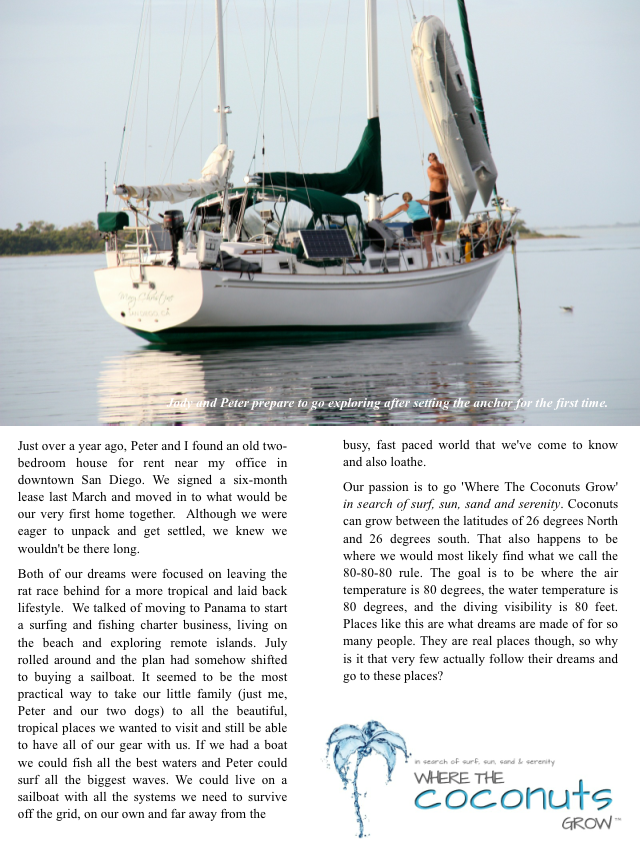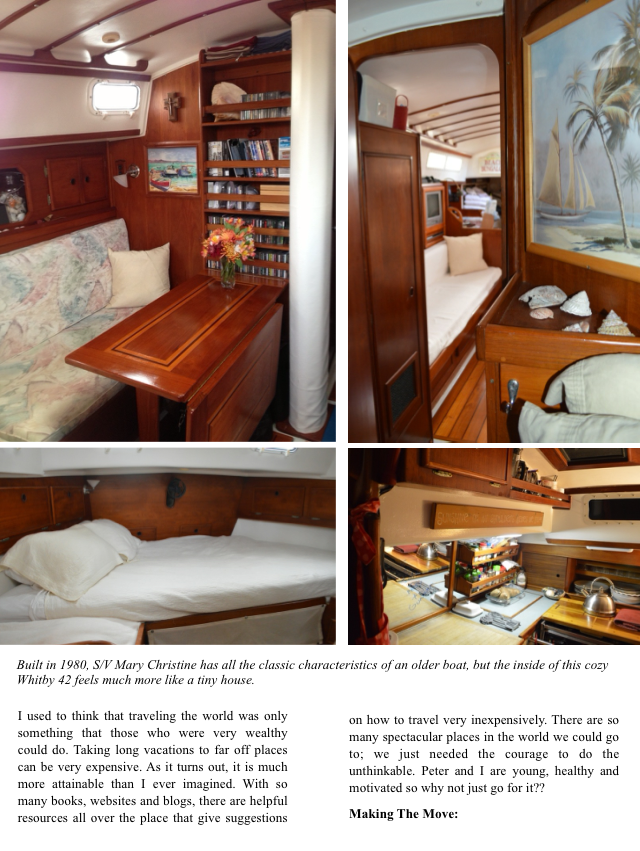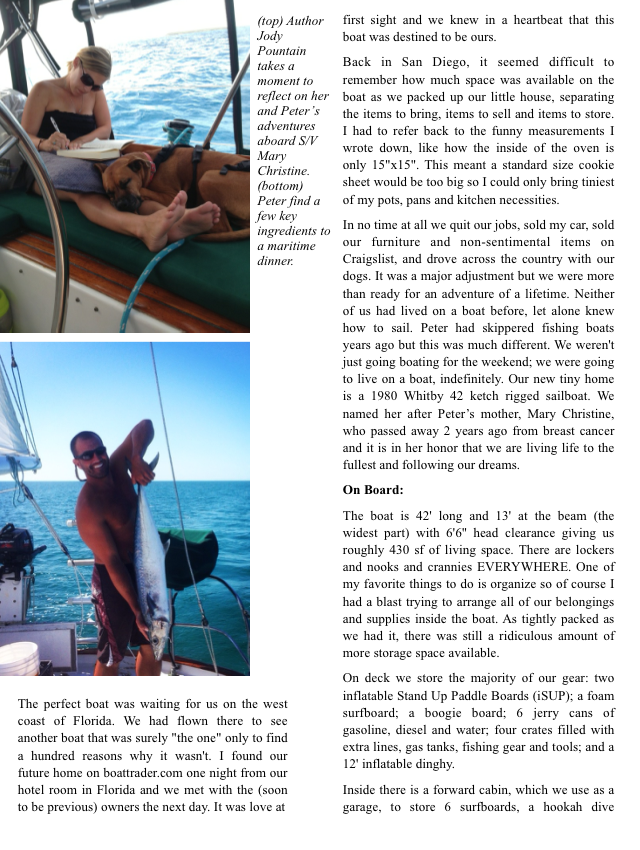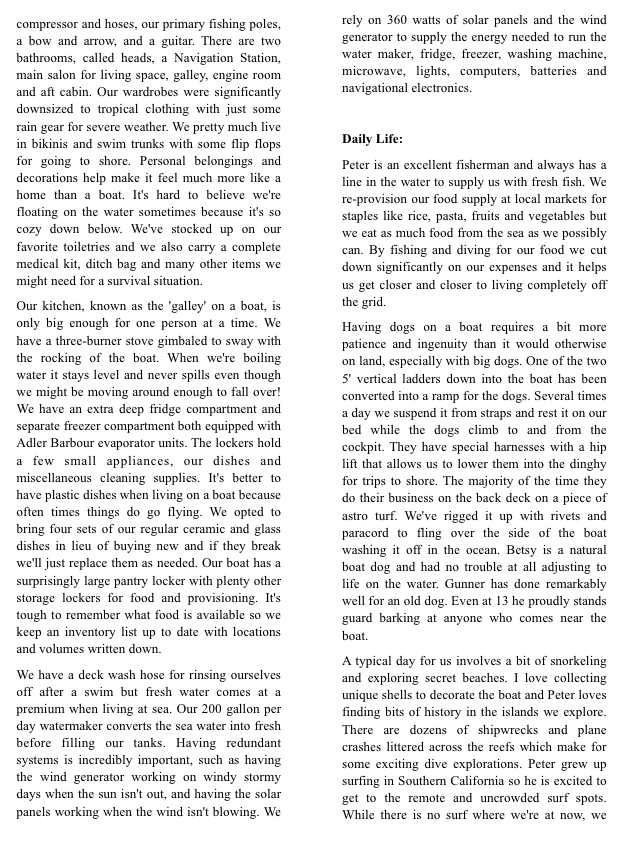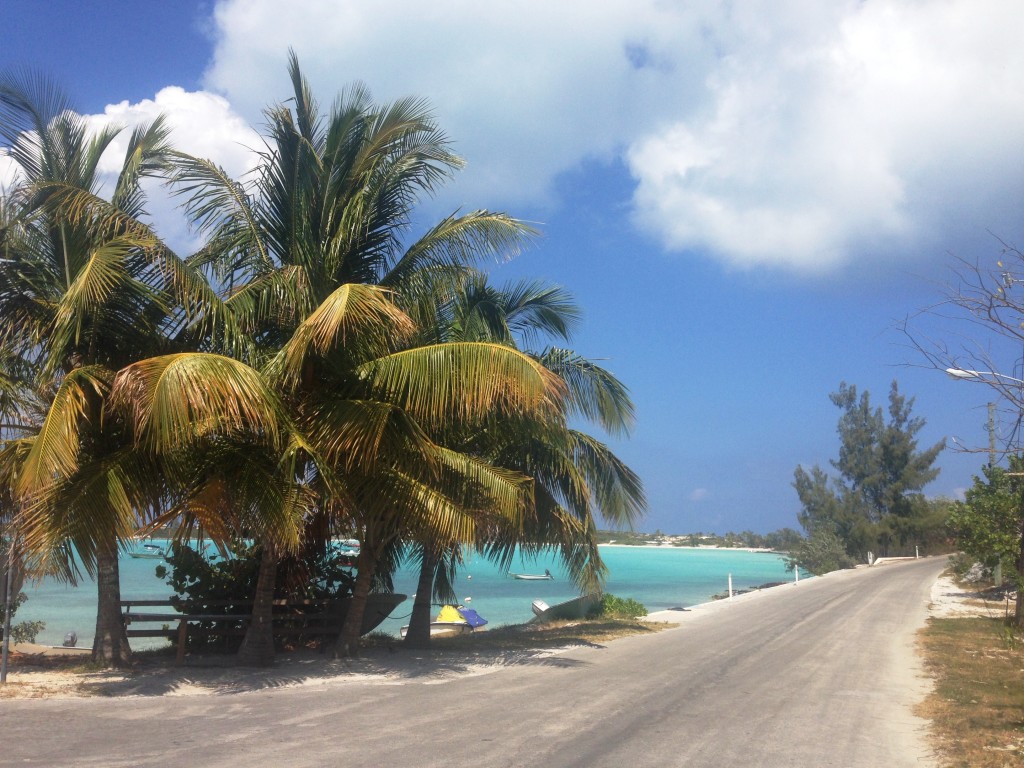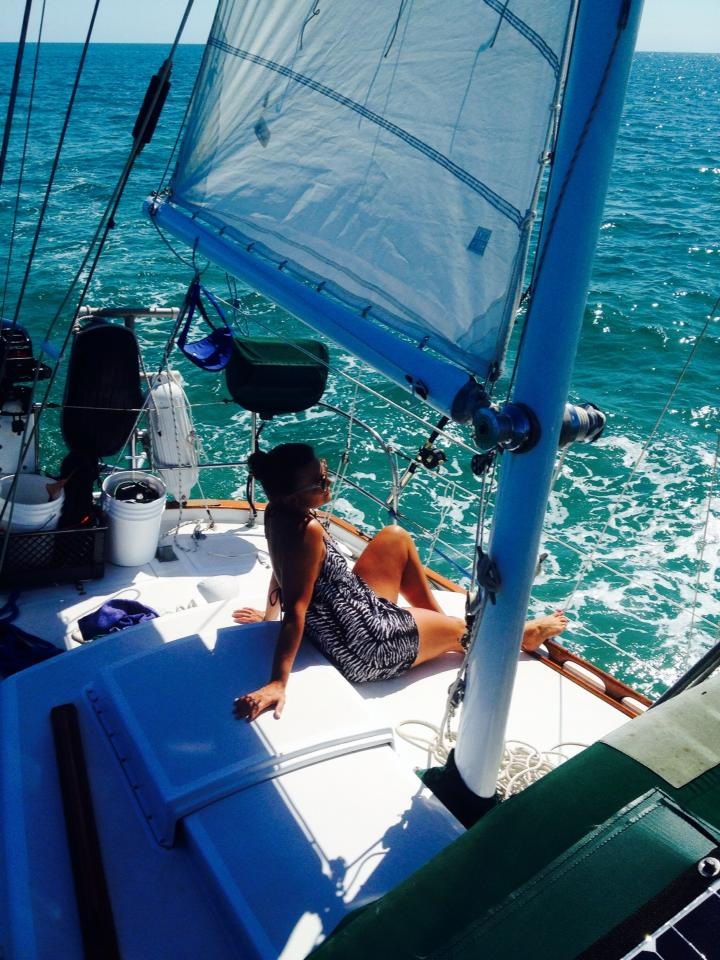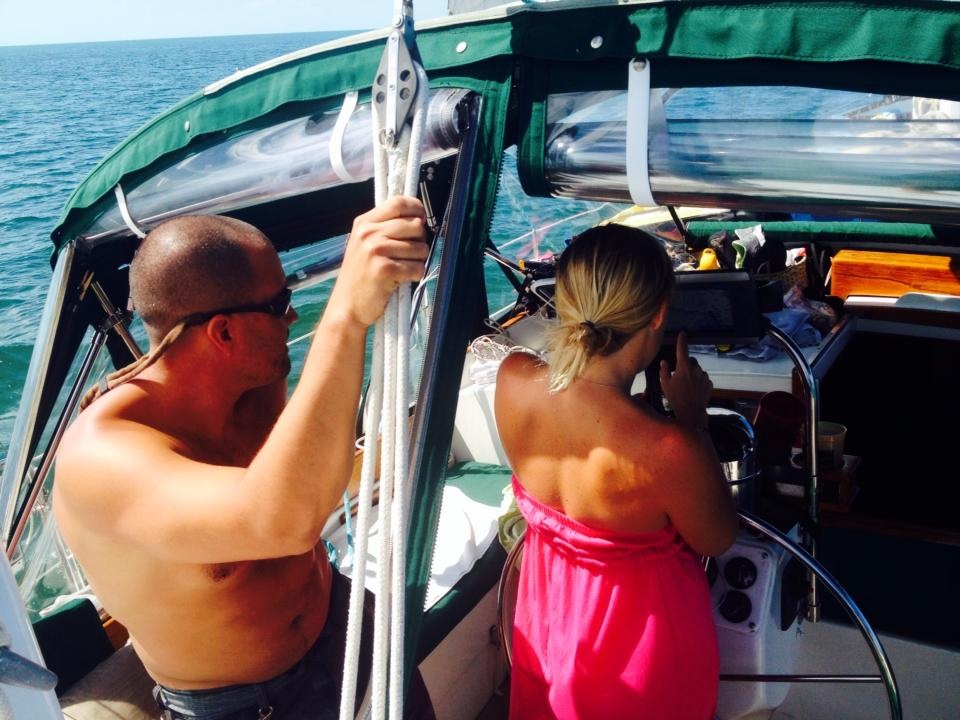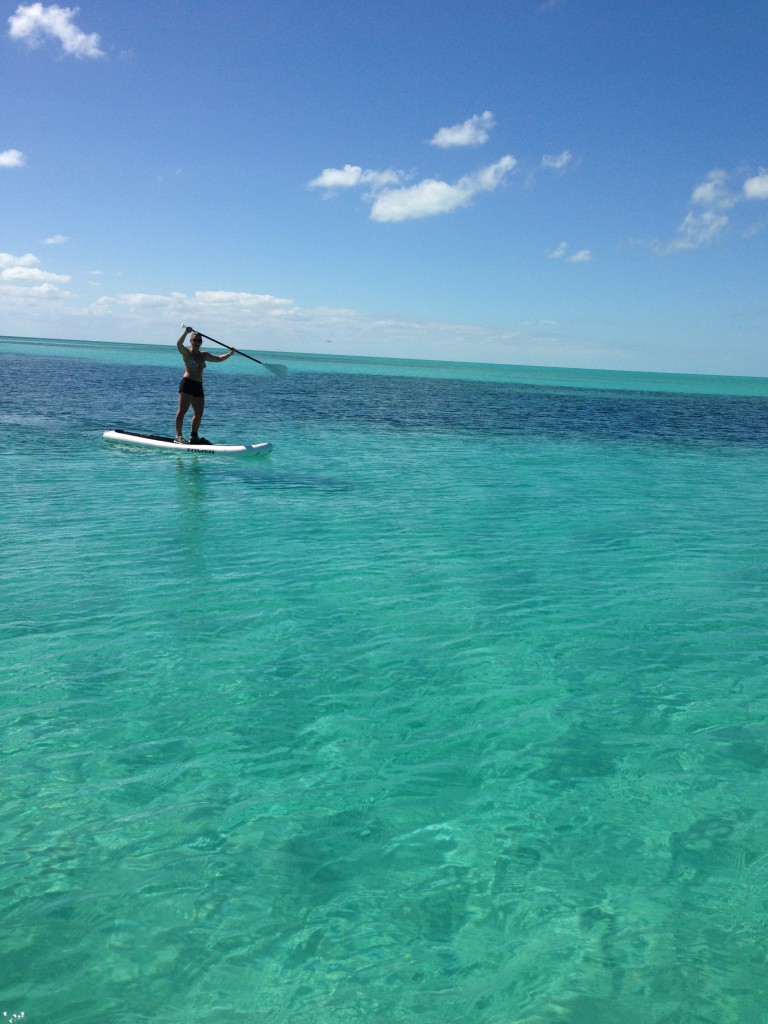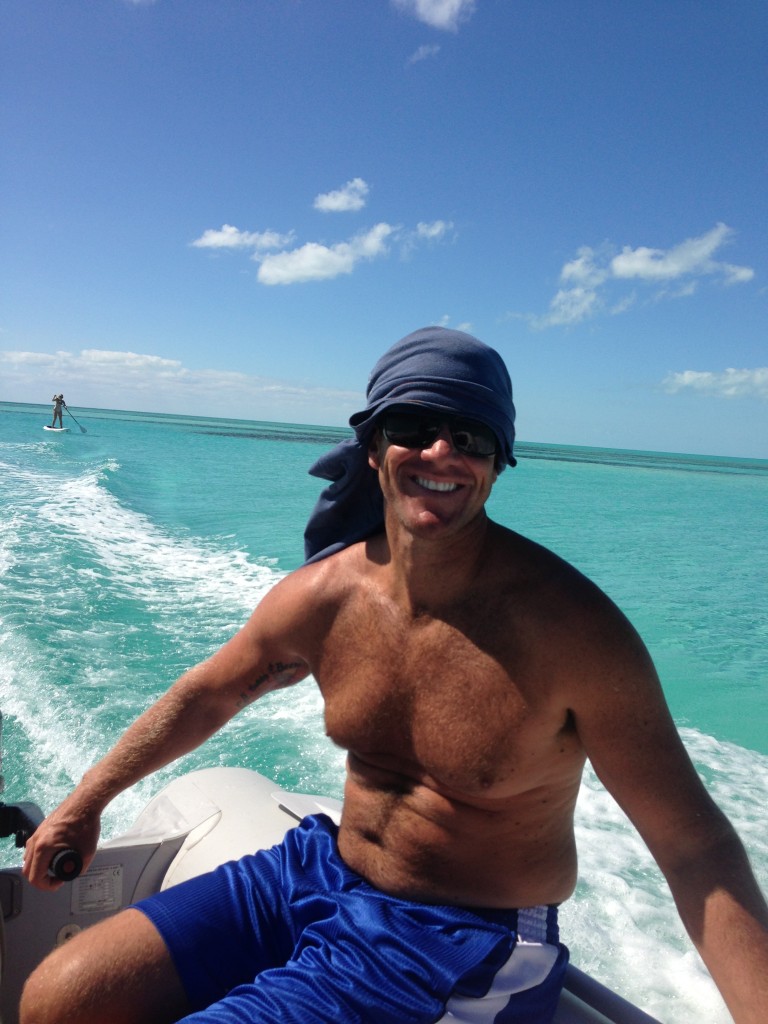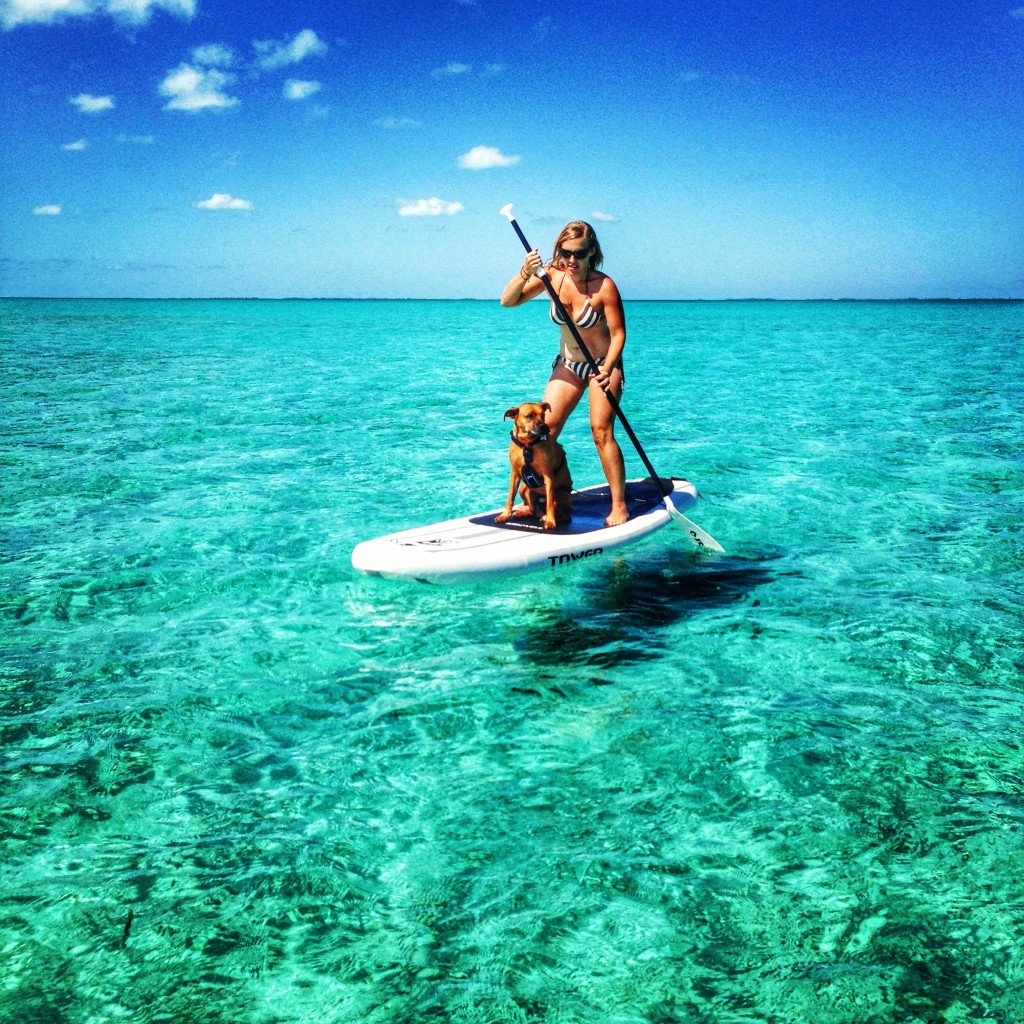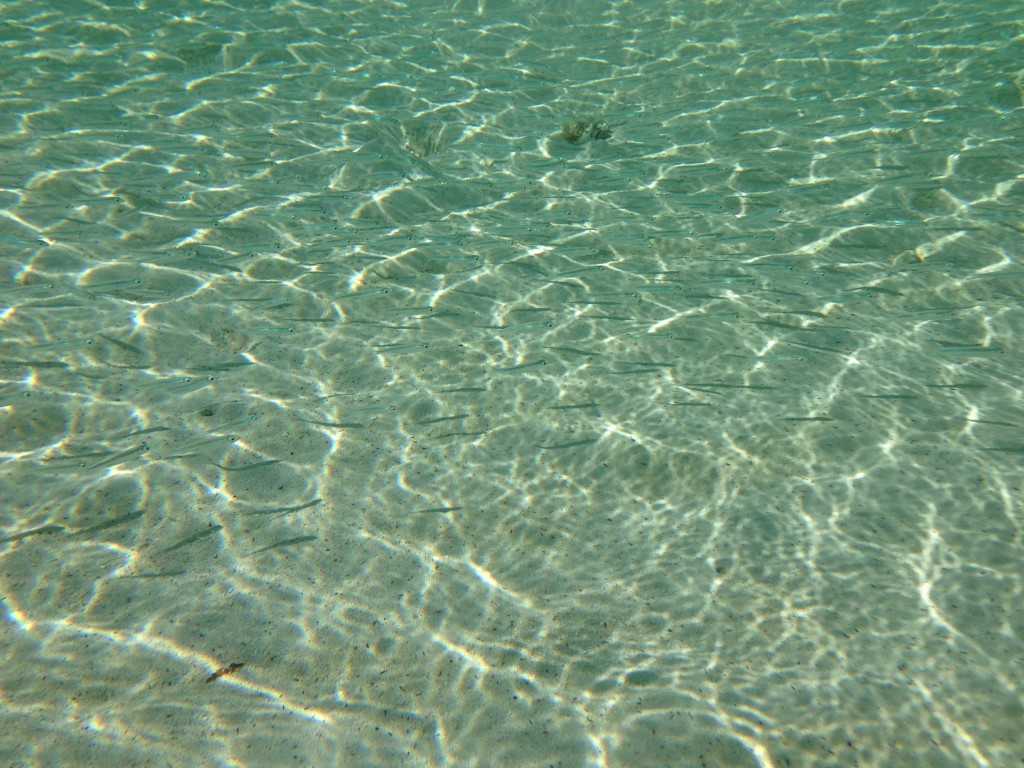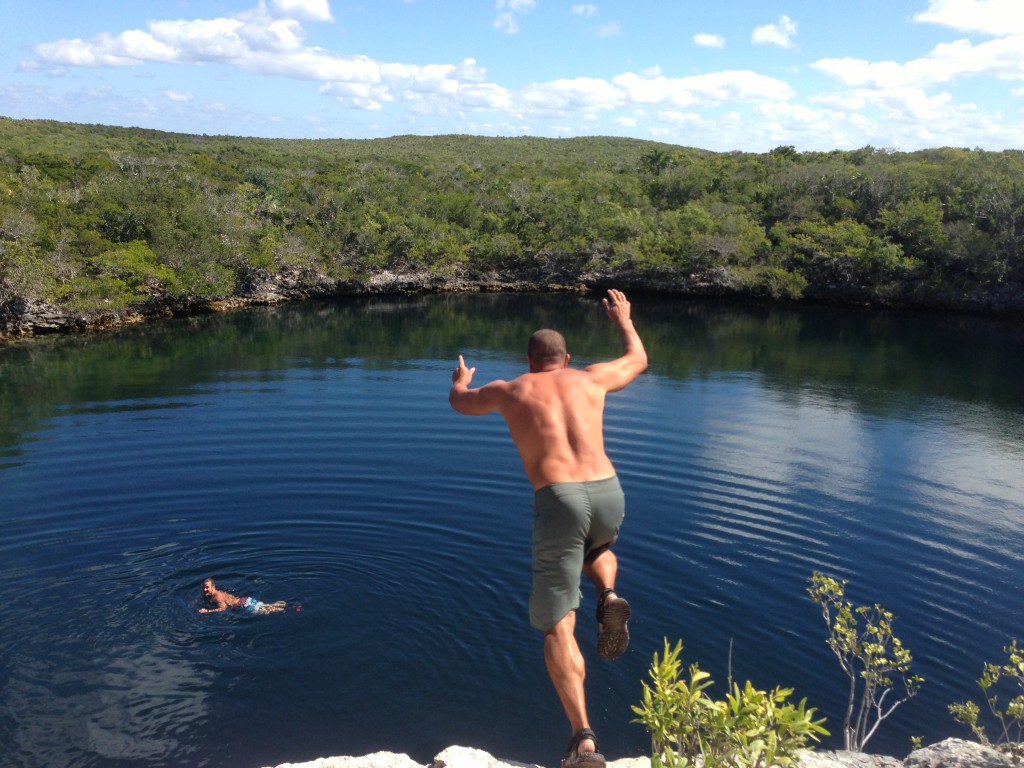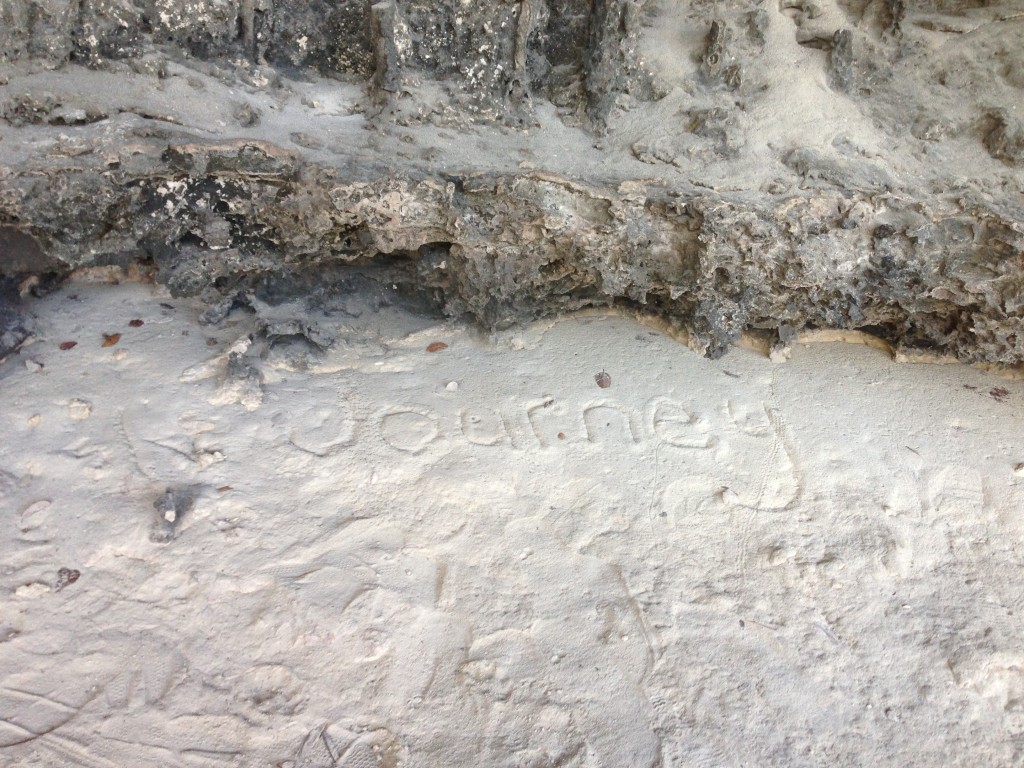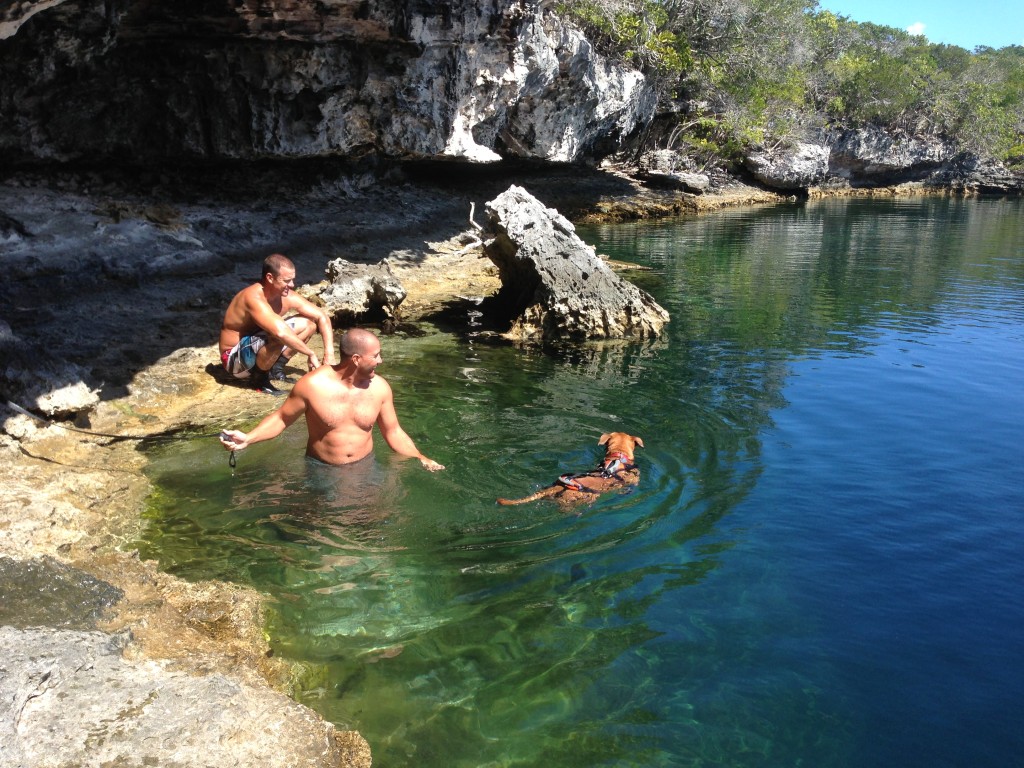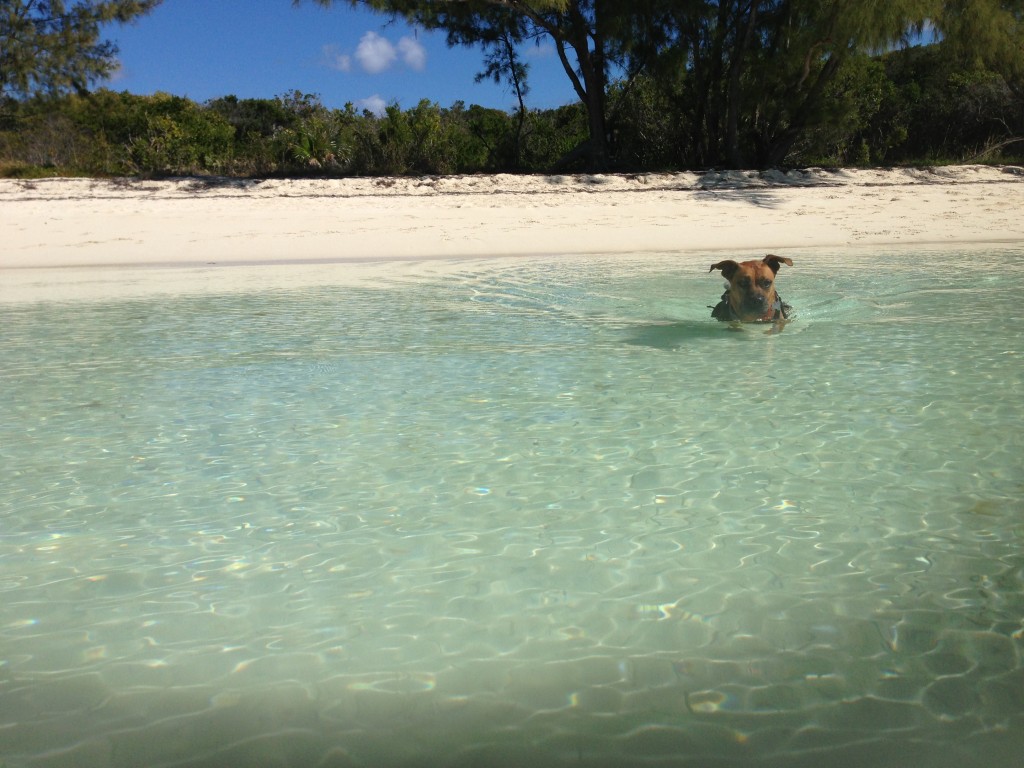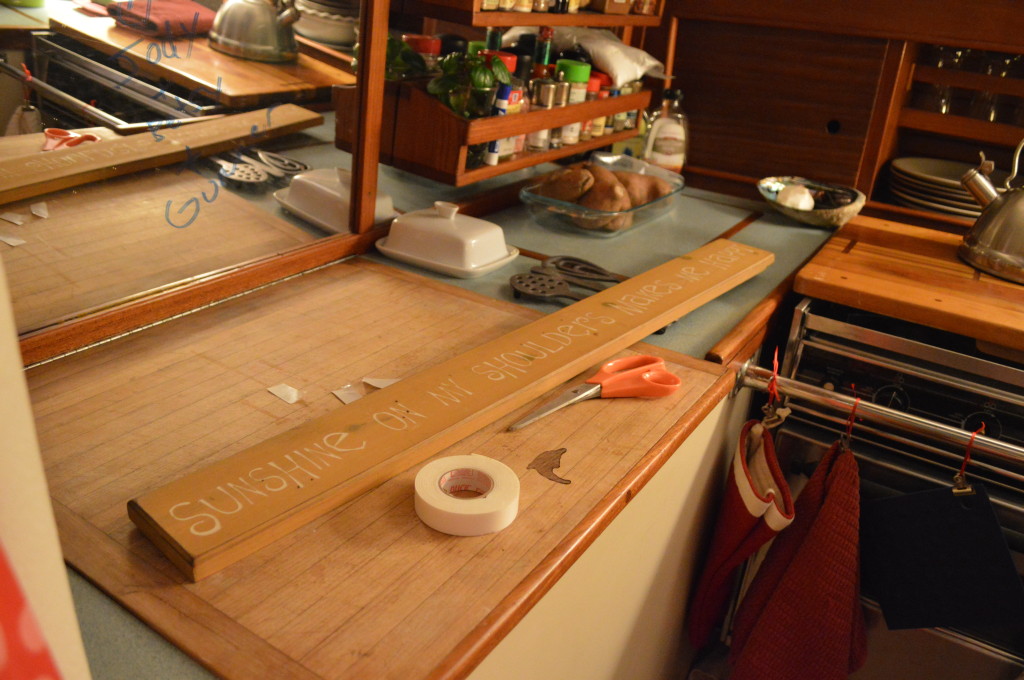Now that the ocean is our home, it’s critical that we have the supplies we need in the event of an emergency. This is similar to carrying emergency supplies in your car and stocking up in your home if you live where “The Big One” could tremble the earth so much it knocks out all roads, power and water at any minute, or if you live where a snow storm could leave you trapped inside a car or home, or if you live where a hurricane or tornado could demolish your town.
There are increasing numbers of Doomsday Preppers around the world today that fear a disaster of epic proportions could render them completely on their own. TV shows have depicted some of the extremes these preppers have gone to ensuring their safety and survival.
For others, it’s a less of an obsession but rather a desire for a ‘Plan B’ type of scenario that inspires them to always be prepared for anything to happen.
Peter’s uncle Dan and his wife Terry own a compound in the desert primarily for off-roading and weekend fun. They also know in the back of their minds that they have somewhere safe to go and fully stocked up with supplies and survival gear in the event that the economy crashes beyond repair and chaos breaks out in the masses.
Two of our favorite TV shows before leaving our little home in San Diego was SurvivorMan and Dual Survival. Both of these shows are of course based on survival and they really get us thinking about whether or not we would have the know-how to really survive in the wilderness. These guys demonstrate that it’s not as easy as it looks to survive in less than ideal conditions when it comes to extreme cold, heat, wind, shelter, food, hydration, finding help, medical issues, and know-how. We believe it is just as important to actually get out and tests your skills before you need to use them. Could you really make a fire with wet or no kindling? Do you know how to use a magnesium stick? Could you catch fish without a fishing pole? Would you actually know how to use a water purifier if you were dying of thirst? Do you know what to do if you’re bitten by a snake or poisonous insect? Would you know how to signal for help without a radio?
It seems so basic to know how to survive, but when you really think about it, could you?? Living on a boat for us brings a whole new meaning to SIMPLE LIVING. It’s about sustaining life and making due with the skills and tools available to us.
Back in October we built a thorough Ditch Bag and Medical Kit with everything we could think of. It was near the top of our priority list as we began outfitting the boat, knowing it MUST be done before we left the protection of Charlotte Harbor. Wonder what kind of survival tools we have on board?
DITCH BAG:
All these things in mind, we assembled our Ditch Bag with the idea that we can survive and find help if something ever happened to the boat, if we were swept out to sea in the dinghy or stranded on an island somewhere. Our ditch bag is essentially a dry-bag with all of the basic survival gear we might need in the event of an emergency. Although one time the Ditch Bag was accidentally left on board instead of taken out in the dinghy during a diving expedition, we have made it a policy to ALWAYS bring the Ditch Bag when we take the dinghy anywhere. Even if it’s just for a quick potty run to shore with the dogs, ANYTHING could happen. Two items we know are missing are a handheld GPS and a handheld VHF radio. We’ve put those on our wish list :)
Our Ditch Bag lives in the cockpit where it’s readily accessible during a storm. If we ever needed to leave the boat, we would be stepping ‘up’ into the life raft with our Ditch Bag in hand and hydrostatic inflatable Mustang life vests and harnesses already on. We’ve also each got an ACR ResQLink+ GPS-enabled Personal Locator Beacon (PLB) fastened to our life vests.
Ditch Bag Inventory:
- Line to tie the Ditch Bag to the dinghy – JUST INCASE :)
- Spot Tracking device with 911 capability
- Beef jerky – high protein content, light weight and stores well
- Knife
- Fishing line
- Fishing hooks
- Fully charged 2-way radio (the other one stays on the boat)
- PUR water purification pump – pickled
- 1 beach towel
- Flares
- Matches
- Lighter
- Waterproof flashlight with fully charged batteries
- Dog leash
- Bungee cord
- Paracord
- 2 space blankets
- Dinghy patch kit
- US Army compass
- 2 rain ponchos
- Duct tape
- Sunscreen
- Bug spray
- Whistle/mirror/watertight container of matches/compass – combo tool
- Magnesium stick
- Tourniquet made from an old Hawaiian sling band
- Napkins in a ziplock bag
- Gloves
- 2 gallon ziplock bags
- Black plastic trash bag
- Wound seal powder
- Medical tape
- Ace bandages
- Ear drops
- Eye wash
- Potable Aqua drops
- Antibiotic ointment
- ChapStick with sunscreen
- Miscellaneous bandaids
- Burn gel
- Antiseptic wipes
- Rubbing alcohol spray
- Nail clippers
- Medical scissors
- Insect bite relief wipes
- Ibuprofen
- Benadryl
- Bar of soap
- Immodium – antidiarrheal

MED KITS:
This boat is our home so all of the medical items we would normally have in a house are also here on the boat. We keep most internal medicines in the lockers in the aft head while the water-tight med kits are stored in the lockers in the forward head. It is critical that these items are organized in a way that we can find what we need quickly.
Just like the Ditch Bag, its important that our med kit is sealed in a water-tight container. Because we have so many items in our med it, we opted to use two large locking lid Tupperware containers. We personally like the SnapWare kind that come in different sizes and lid colors. They have gaskets that seal well and the lids stay locked keeping out air, water and bugs.
Each container has the contents labeled on the outside for quick reference and the items inside are organized in groups, separated by ziplock bags and labeled in further detail. We keep a bag nearby in case we need to grab our whole med kit in a hurry and bring our supplies an injured person in need of help off of our boat.
Something we didn’t start out with in our medical supplies is several courses of antibiotics. We didn’t plan far enough ahead to meet with our doctors before we left California to obtain the courses one might need in a marine environment. Now that we are out of the US we hope to pick some basic antibiotics in a pharmacy or clinic where they won’t cost an arm and a leg ;) We did start off with one course of antibiotics, however Peter already needed it back in Florida when a hardhead saltwater catfish barb punctured his knuckle. It was horribly painful and poisonous. Thanks to our friends Lisa and Will at The Trading Post/Calusa Queen Eco Tours in Burnt Store Marina we googled it in a hurry and found that hot water over 103 degrees (or as hot as you can stand) will neutralize the poison and take the pain away instantly. It could have turned into a nasty infection but we were lucky to already have the medicine we needed on hand. We’ve also learned that hot water is also the remedy to neutralize a sting from Lionfish, Stonefish and most other venomous creatures in a marine environment. If you’re ever out in the dinghy and someone happens to be stung by one of these painful encounters, the raw water exhaust on your outboard motor will do the trick until you can get to shore to find hotter water.
Large Medical Kit Inventory (blue lid – external supplies):
- Medical tape
- Respirator mask
- Scissors
- Space blanket
- Antiseptic prep pads
- Sterile gauze compresses
- Miscellaneous bandaids – latex and latex-free organized by size and material
- Thermometer
- Tourniquet made from an old Hawaiian sling band
- Permanent marker
- Latex free gloves
- Sterile IV catheter – incase we come across a medical professional that might be able to use it?
- Tweezers
- Surgical lubricant
- Sterile blood collection kit
- Sterile disposable lancet
- Sterile closure strips
- Several quick reference first-aid guides

Small Medical Kit Inventory (purple lid – external supplies):
Antiseptic Ointment:
- Antiseptic lotion
- Bacitracin
- Polysporin
- Triple antibiotic ointment
Burn Treatment:
Nose/Sinus:
- Nasal spray
- Sinus rinse packets
Eyes:
- Contact solution
- Eye drops
- Vigamox – pinkeye
Itch/Insect/Poison:
- Drawing Salve
- Poison ivy, oak and sumac cleanser
- Hydrocortosone cream
- Antihistamine cream
- Clobetasol propionate – eczema, rash, skin inflammation
- Meat tenderizer – jellyfish stings
Ears:
- Premixed ear drop solution – rubbing alcohol, hydrogen peroxide and vinegar
- Prescription drops for ear infections
- Wax ear plugs
- Foam ear plugs
Miscellaneous Topical Ointments:
- A&D
- Tinactin
- Clotrimazole
- Preparation H
- Icy Hot
- Retin-A
- Compound-W
- Mederma scar gel
- Muscle rub lotion
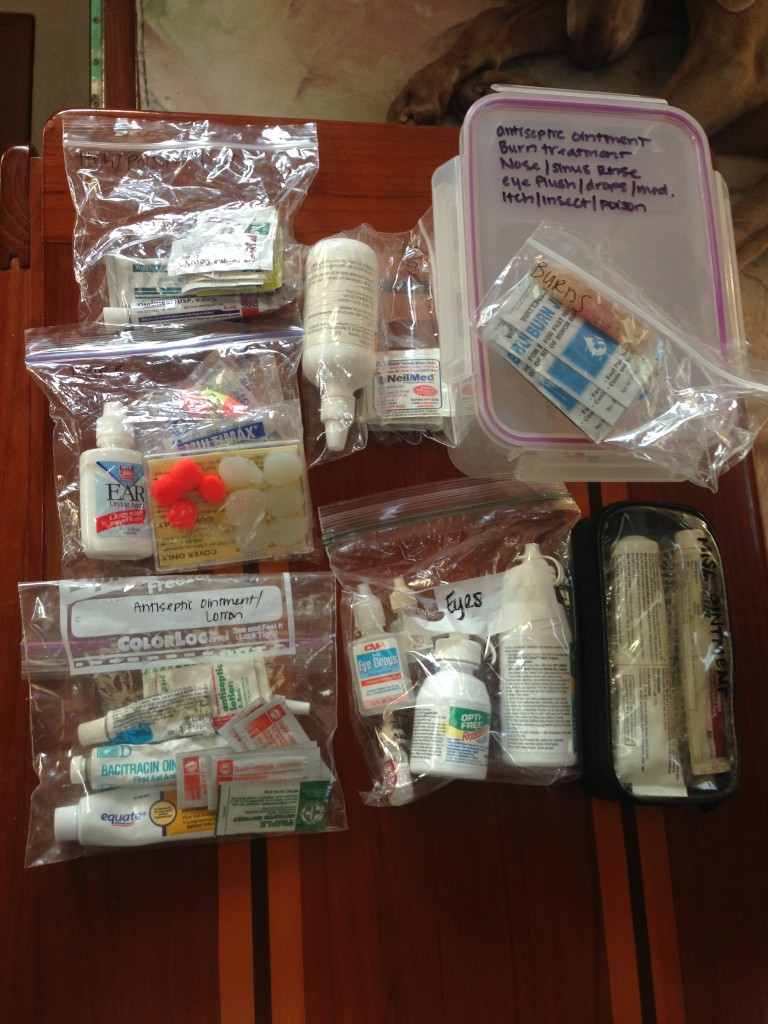
Miscellaneous Medical Supplies and Internal Medication Inventory:
- Vinegar
- Sunscreen
- Aloe Vera
- ChapStick with Sunscreen
- Bug Spray
- NyQuil
- Pepto Bismol liquid and tablets
- Tums
- Fiber chewables
- Throat lozenges
- Throat Coat tea
- Nasal spray
- Sore throat spray
- Omeprezole – acid reflux/heartburn
- Rantidine – acid reflux/heartburn
- Benadryl
- Caffeine pills
- Dimenhydrinate – motion sickness
- MotionEase – topical motion sickness
- Aspirin
- Ibuprofen
- Excedrine Migraine
- Immodium tablets – anti-diarrheal
- Ondansetron ODT – nausea/vomiting
- Arsenicum album – food poisoning
- Xopenex inhaler
- Stool softener
- Vaseline
- Rubbing alcohol
- Witch Hazel
- Tea Tree oil
- Epsom salt
- Vinyl gloves
- Betadine/Iodine
- Hydrogen Peroxide
- Tinactin fungal spray
- Gauze
- Ace bandages
Medical Books and Reference Guides:
- The Merck Manual of Medical Info
- Your Offshore Doctor
- American Red Cross 1st Aid/CPR/AED manual
- The US Armed Forces Survival Manual
There are many great medical reference books out there but these are what we had on hand before we left. In hindsight there are a few others we would have liked to order, but hopefully this will be sufficient should we ever need them. What medical books do you recommend for full-time cruisers like ourselves?
Please share any survival stories you have as well as tips and tricks we might not find in any books :)
We feel we have done a pretty thorough job at assembling our medical supplies and Ditch Bag. We also know you can never be too prepared. Leave us a comment and let us know what other MUST-HAVE items we may have forgotten!! We’d love to hear from you!
**UPDATE** We have recently added several courses of antibiotics to our supply that we picked up at a pharmacy in the Dominican Republic. We have also added lidocaine, sutures and a suture removal kit.


